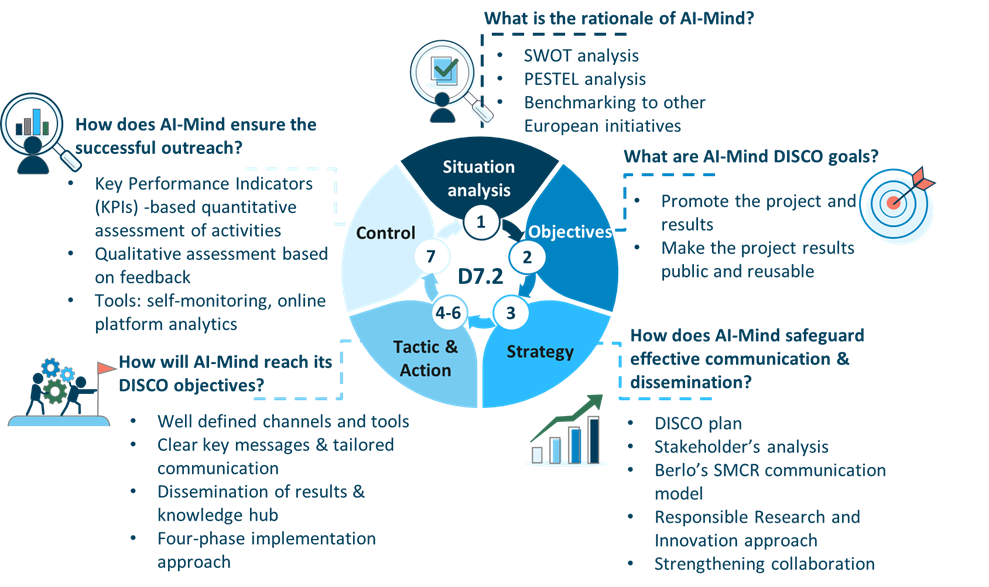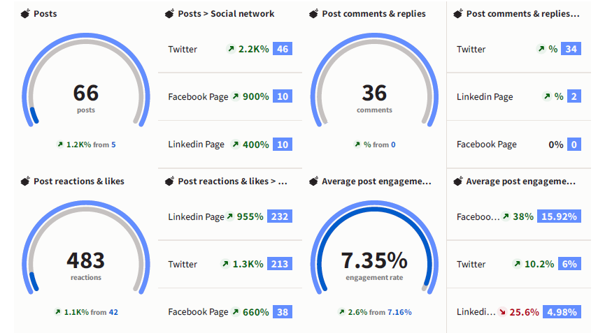Effective Reporting in Horizon Europe: Communication, Dissemination and Exploitation
15th February 2024 at 3:10 pm
Welcome back to our blog post series dedicated to the periodic reports (RPs). From our previous post you could learn, amid other things, that these reports represent a legal obligation towards the European Commission (EC) and that they allow EC Project Advisors and Financial Officers to verify the progress of the work as well as assess the eligibility of the costs claimed by the project partners. If you wish to be reminded about the frequency of the reporting, the process and details on constituent elements, revisit “Our experiences from the first periodic reports” entry. Today, we will focus on reporting about communication, dissemination and exploitation activities that ensure the impact of the project and beyond.
Is it different for reporting outreach activities?
As you already know, reports consist of two elements, Part A, the project-specific online forms in the EU Funding & Tenders Portal and Part B, the Technical Report describing the work carried out during the reporting period, which must be uploaded as a PDF document into the portal. The same applies to reporting your communication, dissemination and exploitation activities. Here you are also required to complete both Part A and Part B.
What do I need to populate in Part A?
Simply click on the according element in the interactive infographic below:
A few more words on the respective sections in Part A of your report:
- Dissemination and communication activities
In Horizon Europe (HEU) projects, this part has gained in volume and information that needs to be provided. Two elements, once reported together, are now separated. All communication activities (e.g. social media campaigns, videos, newsletters) and dissemination activities (e.g. conferences, clustering activities, trainings) should be added, with special attention given to the target audience. Next to the information about the channel, you must also include the name and type of the activity, objective and outcome, as well as the number of people reached from different target groups, (e.g. research communities, innovators, industry, authorities or citizens). Considering these points already in your Plan for Dissemination and Exploitation, including Communication activities (PDEC) that you submitted as a deliverable should help you keep track of implemented activities. - Publications
The EU mandates the comprehensive reporting of all peer-reviewed publications stemming from research projects it funds. By ensuring that all peer-reviewed publications are reported, the EU strives to uphold the principles of open science. This is more than just a bureaucratic formality – it is about transparency, accountability, and maximising the impact of your research. By ensuring compliance with this requirement, you are not only fulfilling your obligations but also contributing to the broader scientific community. A noteworthy point that decides the eligibility of reported publications is the correct funding acknowledgement and adherence to the Open Access rules. Therefore, remember to get yourself well acquainted with the requirements before submitting your paper for publication. Publications accessible via OpenAIRE are often displayed automatically in the portal. Nonetheless, be mindful that these can also include public deliverables or papers authored by the project members but not resulting from the work delivered within the project. Information that must be tracked and reported in the portal includes the Persistent Identifier (PID) of the publication, repository, type of publication, title, authors, ISSN/eISSN, publisher and open access. - Datasets
Is there more to sharing results than peer-reviewed publications? Yes, let us talk about another essential aspect: datasets, a new section in Horizon Europe. The EU mandates that datasets generated from projects are deposited in designated repositories, following the FAIR principles, and reported along with publications. This step is not merely administrative – it is about adhering to principles of Findability, Accessibility, Interoperability, and Reusability. Moreover, by depositing datasets in repositories under open access, you are ensuring that your research is not only visible but also usable to others in the scientific community. To facilitate the process, ensure that you develop a comprehensive Data Management Plan, a mandatory deliverable in HEU projects, where you note the exceptions for data that is not openly shared due to confidentiality, security obligations or other legitimate constraints. - Impact and Impact continuation
New in Horizon Europe are also Impact and Impact continuation. From advancing technology and science to addressing societal challenges, your project’s impact spans a wide spectrum. Hence, when reporting on impact, it is essential to consider the project’s Technology Readiness Level (TRL) and its contributions to different Sustainable Development Goals (SDGs). Additionally, ensure to highlight mechanisms for citizen and/or end-user entity engagement beyond the project’s conclusion.
What do I say in Part B – description of work progress?
Technical Report (Part B) is a narrative description of the work carried out during the reporting period. The core body should consist of a description of the activities performed during the reporting period for each work package, including one on outreach activities. Here we are sharing some recommendations on what to include in this part of the report:
- Start by referring to the Description of Action (DoA) and your PDEC. Describe the progress of each completed or ongoing milestone, task, and deliverable set in the DoA.
- For each activity outlined in the PDEC, mention the objectives, target audience and key performance indicators identified, including their target values. Assess the outcomes of the implemented activities considering quantitative and qualitative analysis.
- Do not forget about your web presence! As per EU requirements, ensure that your project has a website and active social media channels. Include analytics data, such as quantitative indicators describing progress towards outreach goals. Explain how you continuously monitor performance and evaluate the effectiveness of these channels by weighting the results against initial targets set in your PDEC.
- Address any delayed activities by justifying why they were not implemented as planned. Explain how you plan to execute them moving forward and detail the actions taken to effectively complete tasks or achieve milestones and objectives.
- When referring to exploitation activities, highlight efforts taken to ensure both commercial and non-commercial use of the project results. This may include contributions to standards, patent applications, licensing agreements, or other forms of technology transfer.
- Remember to address other points related to the impact of the project, including contributions to SDGs, citizen engagement, and TRL. By assessing and documenting these aspects, you provide a comprehensive overview of the project’s broader societal relevance, engagement with stakeholders, and advancement towards broad applications.
- Finally, briefly outline plans for upcoming activities and tasks if this is not the final reporting period, providing a glimpse into the project’s future trajectory.
- Last but not least, enhance your report with figures and links where applicable to convey messages more efficiently. Data visualisations can provide a clear and concise representation of complex information, making it easier for readers to understand and interpret the data.


Figures can enhance your reporting.
By incorporating these elements into your Technical Report you will ensure comprehensive coverage of your communication, dissemination and exploitation activities, demonstrating accountability, progress, and strategic planning to the EU.
How to make Horizon Europe reporting smooth?
At accelopment, we take pride in our role as leaders in communication and dissemination efforts for numerous EU-funded projects. With a dedicated team of professionals, we provide essential support to consortia throughout the planning, monitoring and evaluation stages. Navigating the intricate requirements set forth by the EC, we guide project partners throughout the reporting process, ensuring it proceeds smoothly and efficiently. If you are interested in learning more about how we can support your project in these areas, please do not hesitate to contact one of our Project Communications Managers.

Joanna Plesniak
Project Manager Communications

Dr. Margaryta Schaltegger
Project Communications Associate
